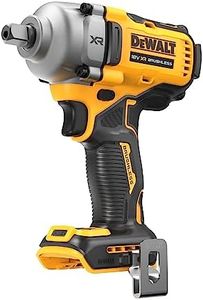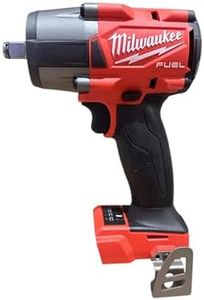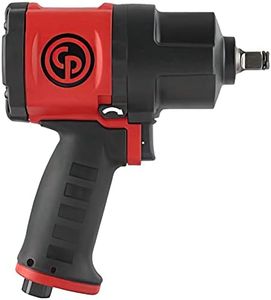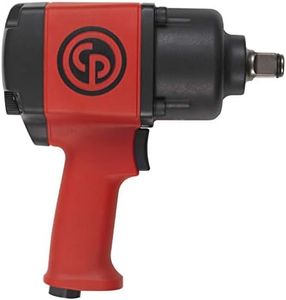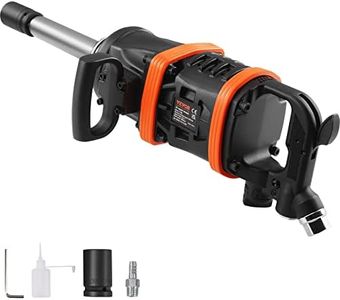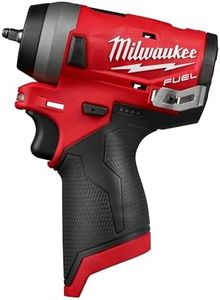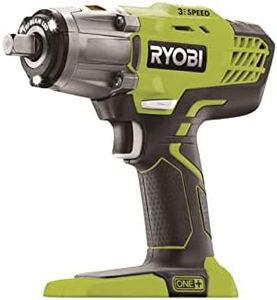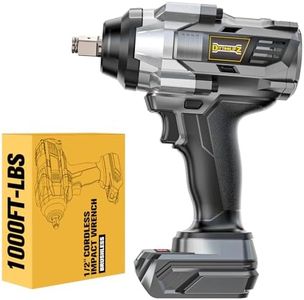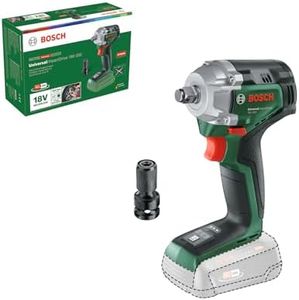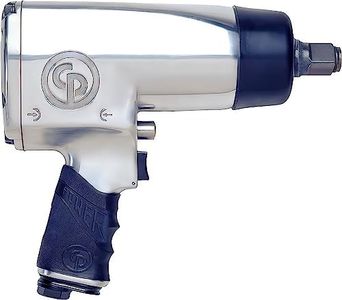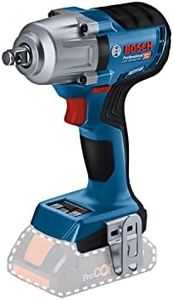We Use CookiesWe use cookies to enhance the security, performance,
functionality and for analytical and promotional activities. By continuing to browse this site you
are agreeing to our privacy policy
10 Best air impact wrenches
From leading brands and best sellers available on the web.Buying Guide for the Best air impact wrenches
When choosing an air impact wrench, it’s important to start by understanding the kind of tasks you’ll be using it for. Think about whether you’re handling automotive repairs, assembly work, or heavy-duty industrial jobs. There’s no such thing as a one-size-fits-all wrench—different jobs and users have different needs. Focus on the critical specifications and features to make sure your new tool performs well for your specific uses, is comfortable to handle, and is reliable over time.TorqueTorque is the measure of twisting force the air impact wrench can deliver, typically measured in foot-pounds (ft-lbs) or Newton-meters (Nm). Higher torque means more power to loosen tight bolts. For lighter tasks like small engine repairs or home use, a lower torque rating (under 300 ft-lbs) might be plenty. Medium jobs, such as general automotive repairs, often require wrenches with 300 to 600 ft-lbs of torque. For tough tasks like heavy equipment or truck work, look for torque ratings of 700 ft-lbs and above. Match the torque to your typical job needs—too much torque can even damage parts, so don’t just aim for the highest number possible.
Drive SizeDrive size refers to the size of the square fitting where sockets attach, most commonly 1/4-inch, 3/8-inch, 1/2-inch, 3/4-inch, or 1-inch. Smaller drive sizes (like 1/4-inch and 3/8-inch) are best for light-duty and access to tight areas. The most common size for general automotive and home use is 1/2-inch, striking a balance between strength and manageability. Larger sizes (3/4-inch and 1-inch) provide more power and are best for big trucks or heavy industrial work. Choose a drive size that matches both the sockets you have and the work you expect to do.
Air Consumption (CFM and PSI)Air impact wrenches need a certain amount of compressed air to work, measured in cubic feet per minute (CFM) and pounds per square inch (PSI). CFM represents how much air the wrench needs, and PSI is the pressure. Lighter tools may use around 2-4 CFM at 90 PSI, while heavy-duty models might need 8 CFM or more. Ensure your air compressor is capable of providing both the PSI and CFM required by the wrench during continuous use. Match your selection both to the tool’s requirements and your compressor’s output—choosing a wrench that your compressor can’t supply will mean it won’t perform properly.
Weight and ErgonomicsThe weight and shape of an air impact wrench affect how long you can use it comfortably, especially if you work in tight spaces or at awkward angles. Lighter models (under 5 lbs) are easier to hold for extended periods and less tiring, making them good for frequent use or overhead work. Heavier models, though possibly more powerful, can cause strain or fatigue with longer use. Features like rubberized grips and balanced design can add comfort. Choose a tool that matches your physical comfort, especially if you’ll use it often or for long sessions.
Speed (RPM/BPM)Speed is typically measured as revolutions per minute (RPM) or blows per minute (BPM), describing how quickly the wrench turns or delivers its impacts. Higher speeds allow for quicker fastener removal or installation, which can significantly boost productivity in repetitive tasks. Tools with variable speed control give you greater flexibility. Select a speed range suited to your jobs—fast speeds for tasks requiring quick bursts and variable speeds when you need more control.
Noise LevelAir impact wrenches can be loud, with noise levels measured in decibels (dB). Quieter models are better for ear safety and more comfortable environments, especially indoors or in shared spaces. Some feature built-in mufflers or noise-reducing designs. If you prioritize a quieter workspace or anticipate extended use, check the noise rating and opt for lower decibel outputs whenever possible.

